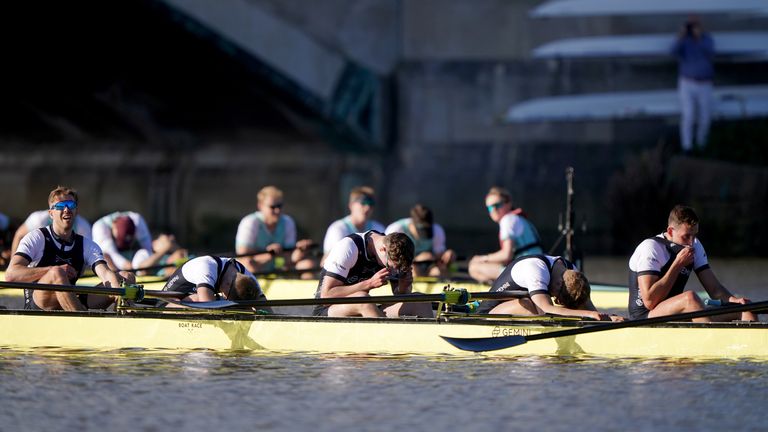Henley Royal Regatta: ‘Alarmingly high’ E.coli levels found in Thames days before event


There is an “alarmingly high” level of the E.coli bacteria in the section of the River Thames used for next week’s Henley Royal Regatta, making it unsafe for swimming, an anti-pollution campaign group has warned.
Around 4,000 rowers will try to qualify for the regatta, which has taken place along the waterway since 1839, with the first of around 400 races taking place on Tuesday.
Henley and Marlow River Action Group tested the water 27 times between 23 May and 25 June, finding an average of 1,213 E.coli colony forming units (CFUs) per 100ml of water.
Anything higher than 900 CFUs per 100ml fails the Environment Agency’s inland bathing water quality standards, meaning it is unsafe for swimming.
River Action Group said the highest figure, recorded on 19 June, was 25,000 CFU, more than 27 times the acceptable limit and it was not included in their report.
The second highest reading reached 8,001 on 16 June.
River Action said that almost half (47%) of its measurements taken in Fawley Meadows, where effluent from the Henley sewage treatment works enters the river and where racegoers can hire hospitality chalets to watch the races, were above 900 CFU/100 ml.
Read more:
Thames Water reveals leap in pollution incidents
Action needed to prevent people ingesting poo, ministers told
Popular beach resort closed after oil spill
Thames Water, the water company responsible for sewage along the Henley stretch of the Thames, says its monitoring has found E.coli levels in the Henley area at a level the Environment Agency would deem as “good” when the conditions are dry and said spikes only occurred on four days in May and June after rainfall.
Advertisement
A Thames Water spokesperson said: “What these laboratory tested results show so far is that E.coli levels in the Henley stretch of the Thames are consistently achieving levels the Environment Agency would deem as ‘Good’ for bathing waters, during dry conditions.
“There have been two days in May and two days in June where there were spikes in the readings following rainfall. Notably, our Sewage Treatment Works in the area have not released untreated effluent since 14 May, demonstrating that multiple sources are likely to have contributed to these elevated readings, which could include farming, industry, road runoff and wildlife.”
It accused River Action of taking “an alarmist approach that tries to apportion blame”.
The warning comes three months after rowers on the Oxford University crew complained of feeling sick and seeing “poo in the water” as they lost the Boat Race, further along the Thames, in London after warnings about pollution levels in the river before the event.
Regatta organisers have advised rowers to cover cuts, grazes, and blisters with waterproof dressings, try not to swallow river water, wear suitable footwear when launching or recovering a boat, and clean all equipment thoroughly.
E.coli, which is found in faeces and can survive in the environment, can cause a range of infections including urinary tract infection, cystitis, intestinal infection, stomach cramps, bloody diarrhoea, and vomiting.

Some strains can lead to life-threatening sepsis requiring urgent medical attention.
Water pollution has been a major talking point during the election campaign, with the Lib Dems promising to protect chalk streams and bathing areas from sewage dumping, while Labour have pledged to block bonuses to water company bosses “until they have cleaned up their filth”.
The Conservatives have said they have introduced legal requirements for water companies to reduce discharges and increased levels of investment.